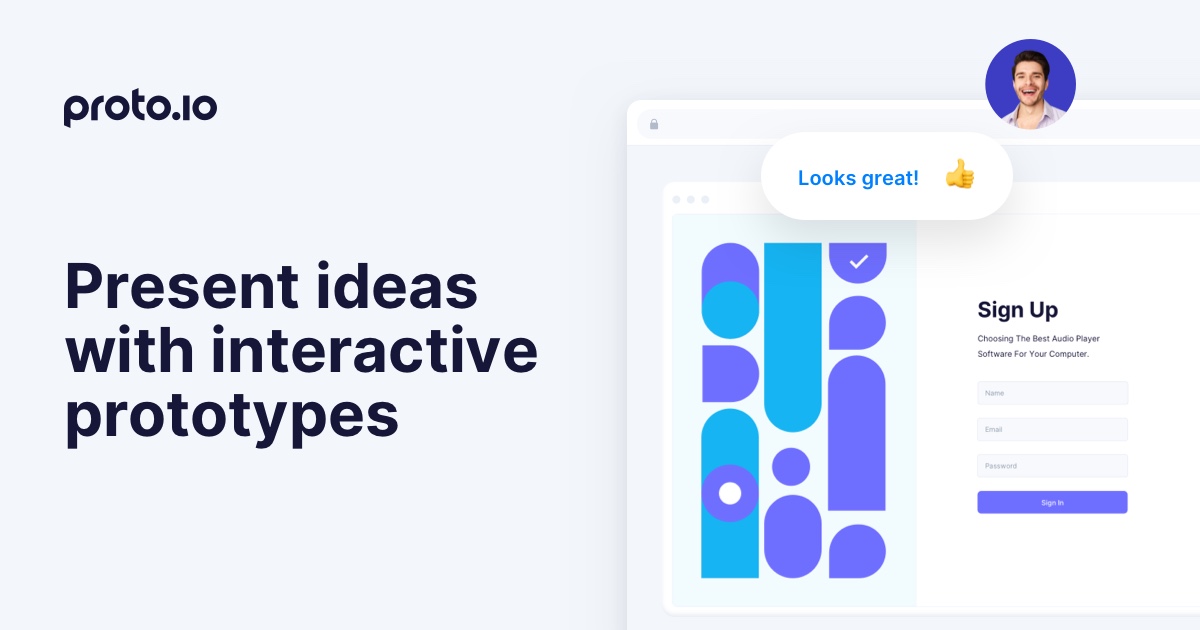UX research can be intimidating for mobile app designers, developers, and entrepreneurs. Most companies understand basic user testing, but many lack deeper experience in research methodology. As a result, other team members — from product managers to designers or anyone in between — have to step out of their comfort zones to conduct additional research.
However, in the incredibly competitive and oversaturated mobile app market, understanding end users is worth a bit of discomfort. UX research can give you a better grasp of what your users need, what aspects of your app they struggle with, and how to deliver the best possible user experience. Here’s why you need more research.
UX Research Helps Eliminate Bias, Ensuring Better Decisions
We all like to think of ourselves as clear-headed, objective thinkers. We know our end users, understand their needs, and can make the right design and development decisions to serve them — that’s what we’re in this industry to do, after all.
We hate to break it you, but you’re not as objective as you think you are. No one is.

Bias clouds business decisions all the time. Business Insider did an interesting roundup of twenty common biases that, if you’re honest with yourself, you’ll probably recognize from your own organization. They include:
- Anchoring bias: Excessive reliance on the first piece of information you receive.
- Confirmation bias: The tendency to listen to information that backs up your opinion and ignore information that contradicts it.
- Pro-innovation bias: Placing excessive value on the usefulness of an innovation, while ignoring its drawbacks.
- Bandwagon effect: Our tendency to go along with the most popular belief.
It’s easy to see how these biases could play out in a hypothetical product. Let’s say you have a parking app, and someone on your team comes up with an innovation — crowdsourcing end user input on the best places to find parking to improve the algorithm.
The CEO and product management love it. It’s a feature the competitors don’t have, that could differentiate your product and make it more sophisticated. Some of the engineers and designers aren’t so sure — users don’t always remember things correctly, and all that extra input might be difficult to incorporate and lead to inferior results.
However, the boss and the product managers are really inspired by the new feature (pro-innovation bias). So when they hear a more in-depth report on the technical difficulties a week later, their confirmation bias and anchoring bias prevent them from giving it the proper weight.
The rest of the team isn’t hard to convince because everyone else is so excited about it (bandwagon bias). As a result, the new feature goes into production, despite serious concerns about its utility and feasibility.
You also may not know your users as well as you think you do, which can lead you to make incorrect assumptions based on your own preferences. As UX Booth puts it, “[UX research] is research that prevents us from designing for one user: ourselves.”
User Testing Can Tell You Things End Users Won’t
For better or for worse, users have more outlets than ever to tell a company (and the entire world) exactly what they think of a product. This can lead to the reasonable assumption that your users will speak up if your app is broken.
That’s not always true. Users might simply switch to a competitor’s app. Your app might have a glitch that only affects certain edge cases, driving off some users entirely while leaving others unaffected. Or users may complain about your app in forums you don’t monitor.

UX research is the only way to be sure of what your users are thinking, and hone in on their concerns with scientific certainty. User testing lets you monitor users as they’re interacting with the app, ask follow up questions, and spot issues in user flow, design or organization.
Other UX methods focus on how users process information. You can verify how users organize data early on with card sorting for example, or test it during mobile app prototyping with tree tests. You can get a broader view of your user base with surveys, then investigate subtypes of users with unstructured interviews. Whatever you need to find out, there’s a UX method that can give you the answers.
UX Testing Data Can Help the Whole Company
Just as a single interview can give you lessons that apply to your whole user base, a UX research project for one app can have implications far outside that app. In many cases, the whole organization will benefit from the data.
The key is to share your research and give other stakeholders the opportunity to draw new conclusions, investigate related avenues, and add to the body of knowledge your company shares.
For example, let’s say you’re testing a new feature in the mobile app prototyping phase. You explore multiple designs, employing user testing to evaluate their merits. In a lot of companies, it ends when the question is answered, and the data ends up archived somewhere, forgotten. However, if you made that data available, it could help:
- Refine your in-house design style, highlighting what UX principles work best for your user base.
- Inform your marketing team and product managers by showing what design features and functions appeal most to users.
- Accelerate future development projects by eliminating the need to test features you know your users don’t like.
- Inspire updates or new products by showing alternate approaches to solving a user problem.
Not every round of user testing will supply that much valuable information, but they all have the potential to yield some exciting insights — if you don’t silo the information.
UX Research Makes You More Efficient
Research takes time and has tangible costs, so many companies assume that more research means more time and greater costs, but that’s not necessarily true. In fact, UX research can speed up your entire product life cycle, from the early stages of brainstorming to release.

Research accelerates decision-making in particular by providing data-based standards for decisions. One of the problems organizations face is that different parties may make inconsistent, but valid assumptions based on their skills and experience, which can lead to extended debate or decision paralysis.
The UX research process allows your team to explicitly examine their assumptions, evaluate them with user testing, and let the data decide. Instead of dividing into rival camps, your team can unite behind the UX principles indicated by the data.
UX research also helps accelerate the mobile app design and prototyping process. By studying different approaches to solving design challenges and examine how users interact with the app, designers and developers can avoid reinventing the wheel — saving everyone a lot of work.
User Testing and Research Should Be Baked Into Your Process
UX research is often treated as a special, ad hoc component of the design process, which is the correct approach for certain kinds of research. As the Interactive Design Foundation points out, “UX research does not necessarily assume an iterative process.” A particular app may pose idiosyncratic questions that necessitate a novel user research methodology outside your normal process.”
But UX research still needs to be a standard part of your approach — just like sketching, wireframing, mobile app prototyping, debugging, and other processes that go into designing an app.
This will improve quality overall by ensuring your decisions are based on data as a matter of course, not a special case. It will also enable you to build technical competency around testing, leading to better test design, more efficient processes and smarter decision-making in the future. And it will decrease risk, greatly lowering the odds of your team working off of the wrong hunch, needing a major last-minute revamp, or misunderstanding consumer demands.
That doesn’t mean every development project should run all the same user tests with the same protocols — you’ll have different challenges with each new app or upgrade you build. Still, standards are important, and can be a good foundation for which to build future UX tests on.

Mobile App Prototypes Maximize the Benefits of UX Research
Testing is always worthwhile, but its benefits depend on your workflow. Tests in the planning or wireframing stages are limited — you can’t have users interact with an authentic model of the product, so you can’t gather data on actual user interaction.
UX research can go much deeper in the development stage, but there’s less you can do with the data — when you’ve already built the app, making major changes is costly and time-consuming.
Testing mobile app prototypes gives you the best of both worlds: the depth of late stage testing, combined with the applicability of early testing. That means you can ask all the questions a project demands and use the answers to make the app better — not in a future release, but in the current development cycle.
Proto.io lets you perform UX research with fully-functional prototypes, virtually indistinguishable from the finished product. And with its user-friendly interface that supports non-technical users with zero coding experience, it empowers all stakeholders, for deeper inquiry and better collaboration. Whether you’re testing a minor upgrade, or building an application from scratch, Proto.io empowers you to ask the right questions, and put the answers to work for your end users.
Proto.io lets anyone build mobile app prototypes that feel real. No coding or design skills required. Bring your ideas to life quickly! Sign up for a free 15-day trial of Proto.io today and get started on your next mobile app design.
Got a great tip on UX research? Let us know by tweeting us @Protoio!






